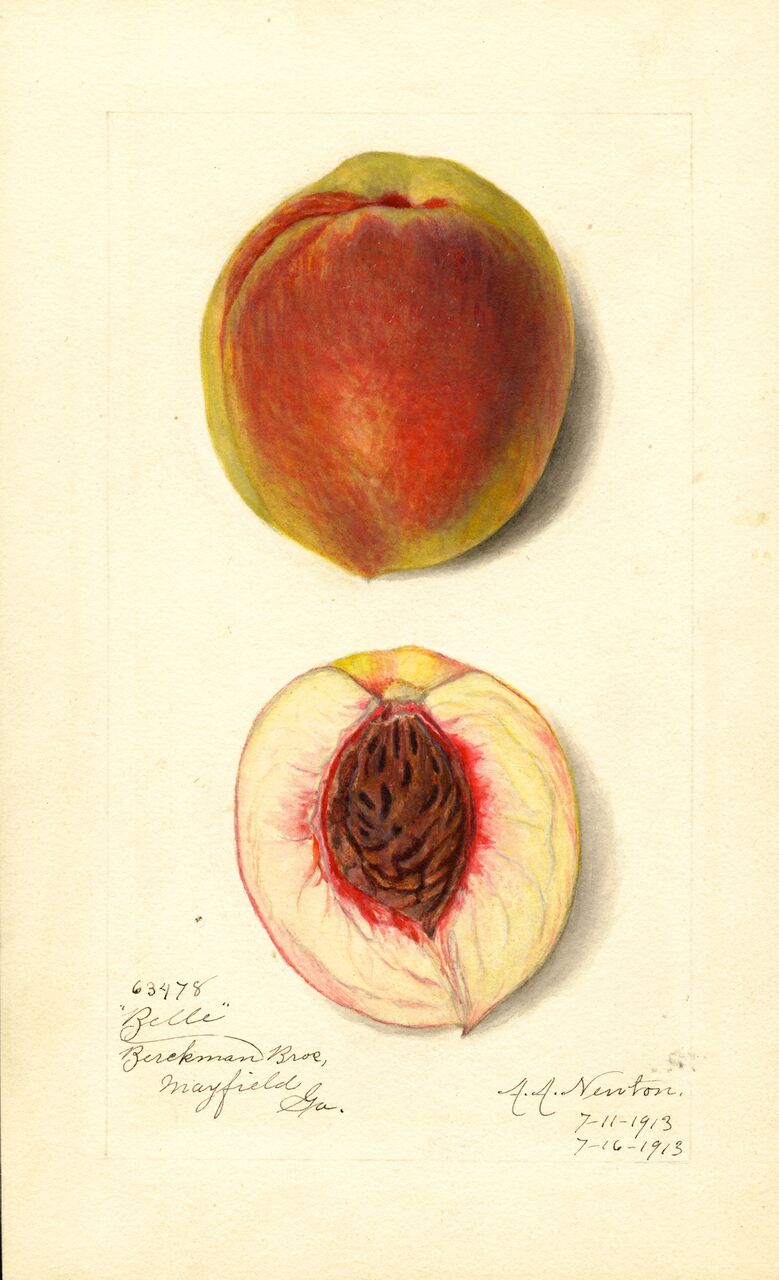 BELLE OF GEORGIA
BELLE OF GEORGIA
Visually one of the most pleasing of peaches—large, luminously white with a regal crimson cheek on the sun side, the freestone fruit is regularly shaped. Its flesh is white, firm, and excellent, ripening in August in its natural range in the American South, hardiness zones 5-8. There is a chill requirement of 800 hours from between 32 degrees to 45 Fahrenheit. The tree is prolific but vulnerable to nematodes, so Belle of Georgia is usually grafted onto resistant stocks. The variety is self-fertilizing. Trees bear in four years and produce brilliant red blossoms. USDA PI 673710
A seedling of the Chinese Cling Peach, probably pollinated by an Oldmixon, the Belle of Georgia was discovered and named by Lewis A. Rumph of Marshallville, GA. Rumph a fruit breeder of some eminence, was uncle of Samuel Rumph, the creator of the Elberta Peach, the primary market Peach of the final decades of the 19th century and the first half of the twentieth. The Belle of Georgia’s launch season was 1870.
The best tasting white fleshed freestone peach grown in the South prior to the introduction of Belle of Georgia was Mountain Rose, first bred in Morristown NJ in 1851. That excellent tasting peach, however, was not a prolific bearer of fruit, so the robust production of the Belle of Georgia made it the preference of orchardists interested in marketing produce. In the period after its introduction, Belle of Georgia’s chief rival in the market was the Amelia peach, another white fleshed freestone of excellent flavor. The Amelia, according to the Alabama Nursery in Huntsville, suffered during railroad transit to bruising and splitting. The firm flesh of the Belle of Georgia made it the preferred variety for transit. Both the Belle of Georgia and the Elberta established Georgia peaches as a national brand, and by 1910, they were shipped by rail from coast to coast.
Nurseries selling Belle of Georgia prior to 1920
Alabama Nursery Company, Huntsville AL 1900. F. Hillenmeyer, Bluegrass Nursery, Lexington, KY 1909. Clingman Nursery & Orchard, Kiethville LA 1908. Colmant Nurseries, West End AL 1904. Smith Brothers Concord Nursery, Concord GA 1909. Delaware Nurseries, Milford DE 1910. Chattanooga Nurseries Dixie Garden Handbook, Chattanooga TN 1907. Van Lindley Nursery, Pomona NC 1915. Turkey Creek Nursuries, Macclenny FL 1906. Munson Hill Nurseries & Greenhouses, Falls Church VA 1908.
Image. U.S. Department of Agriculture Pomological Watercolor Collection. Rare and Special Collections, National Agricultural Library, Beltsville, MD 20705, Amanda Newton, 1913.
David S. Shields